How a 12,000-litre herd balances efficiency and cow welfare
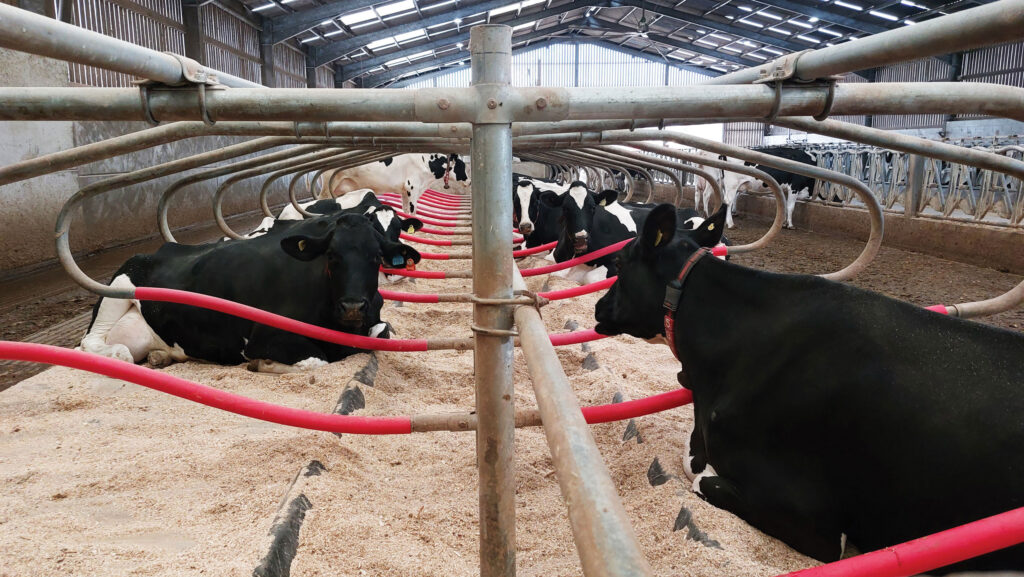 © MAG/Shirley Macmillan
© MAG/Shirley Macmillan A focus on optimising milking efficiency through 12 robots has created a setup that also maximises cow comfort and welfare for a large Wiltshire herd.
The result is a herd average of 12,000 litres at 4.12% fat and 3.21% protein for the 780 Holsteins at Sharcott Pennings Farm, near Pewsey.
This Mole Valley Focus Farm originally milked 480 cows three times a day through a rotary, producing 9,000 litres a cow.
See also: How a high-yielding dairy herd hits 1,000kg milk solids a cow
Farm facts
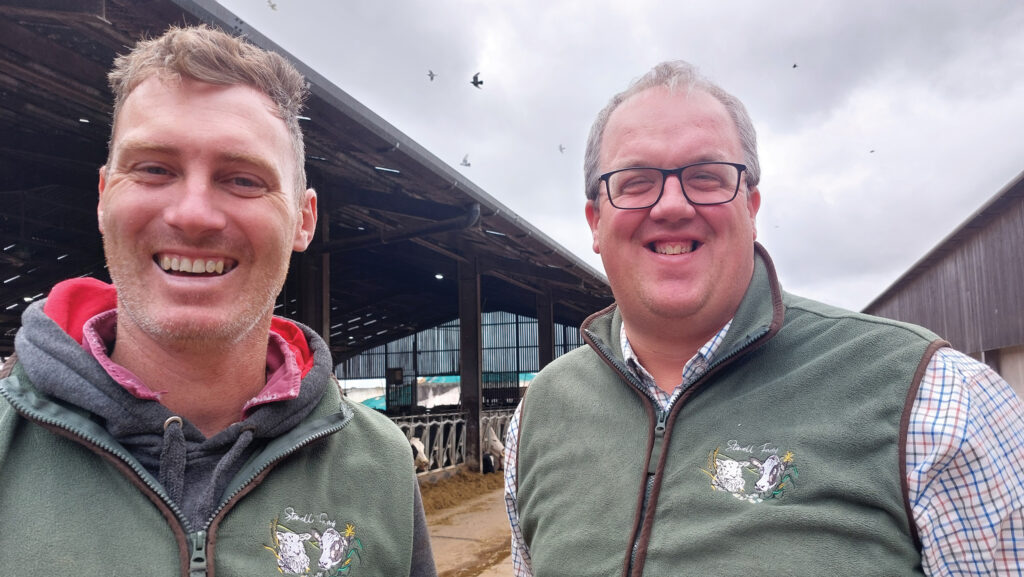
Chris Gowen and Neil Ridgway © MAG/Shirley Macmillan
Sharcott Pennings Farm, owned by Stowell Farms, Wiltshire
- 780 Holsteins
- 650 replacements calving at average 23.2 months
- 12,000 litres average yield
- 3,200 litres milk from forage
- 3.6t concentrates a cow
- Growing 263ha maize; 49ha wholecrop rye; 53ha lucerne; 97ha clover-grass leys
A switch to robot milking and an increase in cow numbers led to a redesign based on efficiency, says farm manager Neil Ridgway.
“We target 10 million litres a year sold, and set up the farm by shed size and free time for each robot,” he says.
“Using robots on a large scale, you are always moving cows around if you look at yield, so robots are inefficient in low-yielding groups, but overworked in high-yielding groups.
“We move animals into a group when a robot’s free time drops to below 12-15%.
This means we have cows at different stages of lactation in each milking group,” he explains, adding that this leads to fewer group changes and a low-stress environment.
To maximise welfare, buildings were overhauled in 2022. The parlour, collecting yard and handling facilities in one shed were converted into dry cow accommodation.
Particular attention was given to space for close-up cows in the last three weeks before calving.
There are now 39 cubicles and 72 feed spaces for 38 head in this group, plus 105 cubicles for 105 far-off dry cows.
The numbers
- 0.31: Feed rate (kg/litre)
- 750: Average mature cow weight (kg)
- 27: Pregnancy rate (%)
- 1.5: Tonnes of daily refusals for 660 milking cows
- 17,000: Tonnes of silage capacity
- 8: Staff: five full time, two apprentices, one farm manager
New shed, same layout
A new shed was then added to make three buildings for milking cows. Each has the same layout of four robots and 220 cubicles, for 220 cows run in two groups.
There are 7m of drinking space for every 110 cow spaces (supplied by four, fast-filling water troughs).
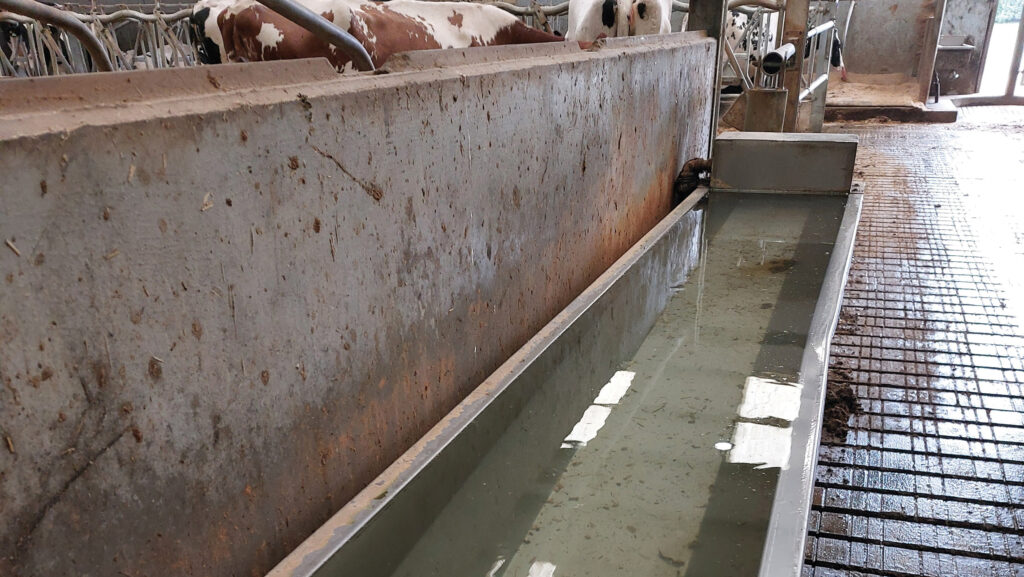
© MAG/Shirley Macmillan
The former outdoor walkway to the parlour was repurposed as a loafing area giving an opening to dead ends in some cubicle passages.
Air quality in each shed is now controlled by three fans, operated by humidity and temperature sensors.
Heat stress is no longer such a problem, according to herd manager Chris Gowen:
“When it was 40C, we lost 2 litres a cow, whereas other herds lost 7 litres – our sheds remained cool,” he says.
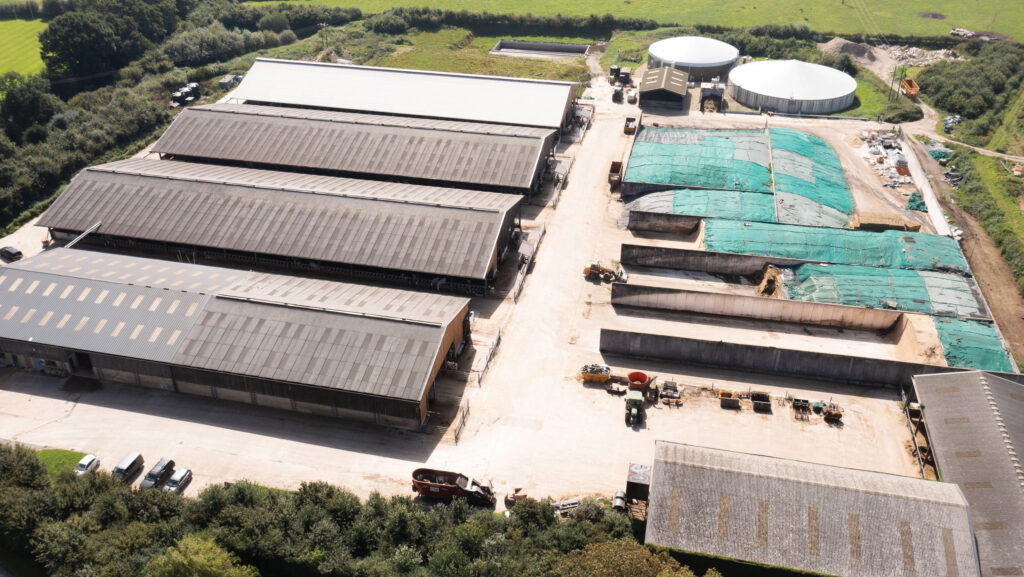
© Beep Media
Changing to robotic milking immediately cut cow travelling and standing time from eight hours a day to less than one, says Neil.
Now, relaxed cows with free choice average 3.5 milking visits a day, ranging from three to five according to stage of lactation, and there are 660-680 cows in-milk at any one time.
As efficiency improves, he expects this will drop to 640 cows.
By focusing on efficiency and welfare, Neil and Chris were able to group cows according to need, so decided to establish separate groups for fresh cows and first-lactation heifers.
These animals stay together until they have settled into lactation, then move as a group after 100-120 days to join a milking shed with space.
Heifer group
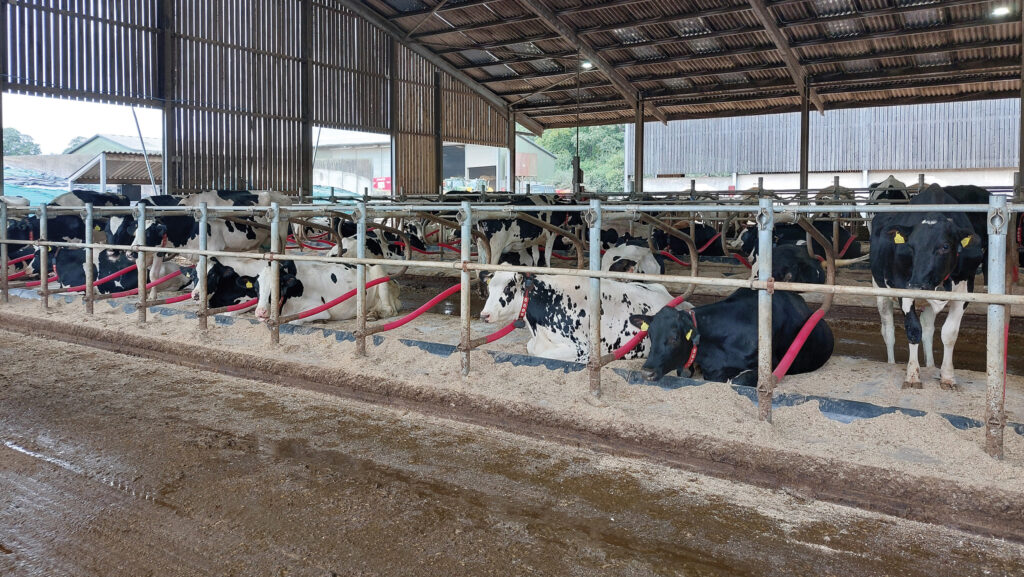
© MAG/Shirley Macmillan
Heifers reared together can now maintain a close relationship throughout their herd life, says Chris.
As a result, the change to milking is less demanding. “We have created a safe environment for them, they are not under pressure from bully cows.
“We let heifers be heifers – to grow and adapt to new sounds and different smells.”
Milking them apart from mature cows has helped increase milk yield by 600 litres to 10,000 litres since 2022.
Lameness incidence has dropped over the same period from 7% to 3%, while conception rate has gone up from 32% to 37%.
And some 82% of heifers are now making it to a second lactation (up from 71%).
Fresh cows also benefit from being settled into lactation before moving on to another milking group.
The transition diet has contained propylene glycol to help rumen and liver function for almost a year.
What started as a strategy for high-risk animals has continued, says Neil, because it works.
This is not least because management ensures cows are eating their full allocation.
In turn, this means a cow’s metabolism is primed, so there is no extreme weight loss post calving, reducing the incidence of negative energy balance, he explains.
Cows are weighed in the robots and this information is used to monitor weight loss regularly.
So far, it is lowest when a cow hits peak milk yield, and from week 12 begins to rise with body condition scores at 3-3.5, he adds.
Consistency and cleanliness
He and Chris think the key areas to ensuring ration intakes are top-quality forage, consistency and cleanliness.
This is where automating routine tasks such as scraping-out (there are seven slurry collectors) and pushing-up feed (using two robot feed pushers) release the farm team to attend to the details.
For instance, the farm runs its own forage harvesting kit to be able to clamp the best quality crops at the right time.
At feed out, to avoid wasting good silage, a 24cu m self-propelled mixer wagon is used which shaves about 5cm a time off the clamp face.
This leaves a flat surface (not steps), which prevents rain ingress and spoilage, says Neil, who points out that silage is also mixed and fed straight away, not left in a pile for hours.
Rations are fed once a day and pushed up 10 times. The aim is for no more than 8-10% refusals each morning.
These are cleared away (not fed to other livestock) and used in the farm’s anaerobic digester:
“One person cleans out using a JCB and hand scraper for the nooks and crannies about 10 minutes in front of the feeder wagon,” adds Chris.
He says that their next steps include looking at late-lactation management to find ways to reduce milk yield before drying off.
Some cows are still giving 40 litres, which is “not ideal” – and some extra cladding is needed at the end of a shed to provide weather protection.
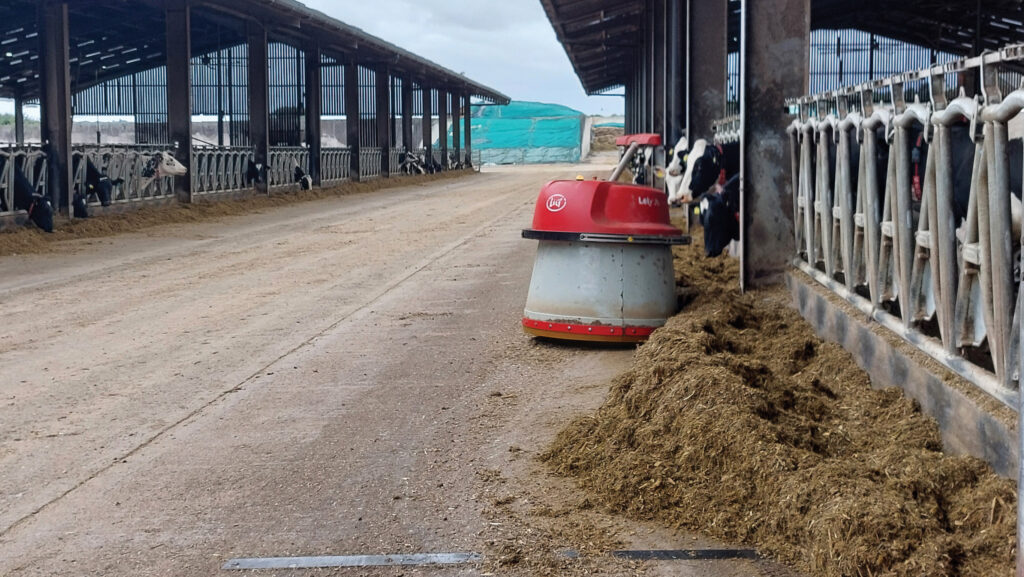
© MAG/Shirley Macmillan
Cow health
After two years, herd results reflect that the diet devised by their nutritionist is effective.
Cows have enough space to eat, drink and are presented with a consistent, fresh, and palatable feed.
In 700 calvings this year, there were two milk fevers, and after more than 767 calvings, no cases of clinical ketosis and 14 of left displaced abomasum.
Minimal change and ample space have led to a low-stress environment every day, all year round: “Cows are chilled and happy; it’s a relaxed system,” says Neil.
Rations at Sharcott Pennings Farm, September 2024 |
|||
|
Feed (in kg) |
Premix blend |
Milking cows |
First lactation heifers |
|
Maize silage |
|
20 |
18 |
|
Wholecrop rye |
|
4 |
4 |
|
First cut 2024 |
|
22 |
22 |
|
Straw |
0.4 |
0 |
0.150 |
|
Crimped wheat |
|
2.5 |
3 |
|
Premix blend |
|
6.1 |
6.1 |
|
Megalac |
|
0 |
0.1 |
|
Traffordgold |
|
1 |
1 |
|
Concentrate in robot |
|
2 |
2 |
|
Grainbeet (5:1brewer’s grains to sugar beet pulp) |
|
2.5 |
2.5 |
|
Vitamins and minerals |
0.49 |
|
|
|
Megalac |
0.15 |
|
|
|
Butterfat Extra |
0.15 |
|
|
|
Sugarbeet pulp |
1 |
|
|
|
Molasses Hi Pro |
1 |
|
|
|
Rapemeal blend |
2,9 |
|
|
|
TOTAL |
6.1 |
60.1 |
58.8 |
|
Dry matter intake |
5.2 |
21.9 |
21.8 |
|
Source: Dr Matt Witt, Mole Valley |
|||
How to ensure consistent ration intakes
- Monitor feed stocks to ensure cows are getting the correct level of inputs.
- Monitor cow rations over 24 hours.
- Make sure mixing instructions and amounts of feeds are clear, easy to follow and everyone understands them. For small inclusion ingredients (such as yeast, or minerals), make a premix first for accuracy and make sure each cow gets the right amount.
- Make it as easy as possible for the cows to eat the ration. Feed should be fresh and pushed up regularly. Supply ample trough space, clean water and ensure heifers are not bullied. Minimise sorting with correct forage chop length and good ration structure.
- Use technology to record and monitor what is going into the mix each day to see what is being eaten by the cows. The farm team involved in feeding can log in and see what is happening.
Source: Dr Matt Witt, nutritionist, Mole Valley
